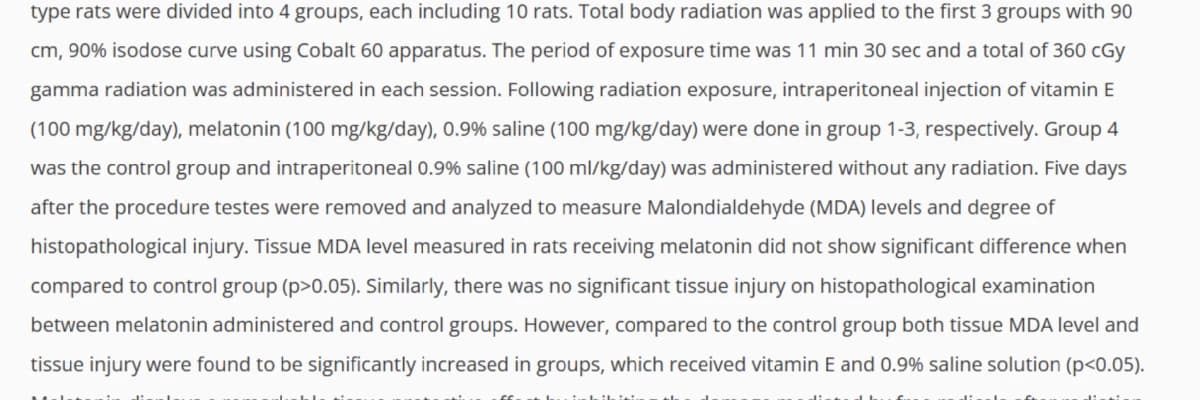Protective Effect of Vitamin E and Melatonin Against Radiation Induced Damage in Testes of Rats (SCI-SCI EXPANDIE)

To investigate the effects of vitamin E and melatonin on gamma ray induced damage in testes of rats. A total of 40 Wistar type rats were divided into 4 groups, each including 10 rats. Total body radiation was applied to the first 3 groups with 90 cm, 90% isodose curve using Cobalt 60 apparatus. The period of exposure time was 11 min 30 sec and a total of 360 cGy gamma radiation was administered in each session. Following radiation exposure, intraperitoneal injection of vitamin E (100 mg/kg/day), melatonin (100 mg/kg/day), 0.9% saline (100 mg/kg/day) were done in group 1-3, respectively. Group 4 was the control group and intraperitoneal 0.9% saline (100 ml/kg/day) was administered without any radiation. Five days after the procedure testes were removed and analyzed to measure Malondialdehyde (MDA) levels and degree of histopathological injury. Tissue MDA level measured in rats receiving melatonin did not show significant difference when compared to control group (p>0.05). Similarly, there was no significant tissue injury on histopathological examination between melatonin administered and control groups. However, compared to the control group both tissue MDA level and tissue injury were found to be significantly increased in groups, which received vitamin E and 0.9% saline solution (p<0.05). Melatonin displays a remarkable tissue protective effect by inhibiting the damage mediated by free radicals after radiation. The same effect could not be obtained with Vitamin E. Thus, the cytoprotective effect of melatonin can be of value in preserving testicular functions after radiation exposure.
